When it comes to sweets and snacks, Japan has a lot to offer in terms of variation. However, there is one specific type of confections: the crème de la crème of Japanese sweet treats: wagashi or traditional Japanese confections.
Traditional Japanese confection, wagashi, is a sweet treat usually served with matcha during the Japanese Tea Ceremony. Kara-kudamono, a deep-fried mochi is said to be one of the first wagashi. However, traditional Japanese confections now include different types of mochi, manjus, and many more.
If you want to know about the traditional Japanese confections you should try when visiting Japan or are curious about which confections you can purchase right now to try in your own home. You have come to the right place. This article will provide information on all of the main types of confections and which ones you can purchase right now.
What are Traditional Japanese Confections?
Traditional Japanese confections have been around Japan for centuries and are still one of the most essential and attractive parts of Japanese culture. These sweets are made with sugar, Japanese glutinous rice flour, Azuki/Anko (Japanese red beans and red bean paste), and other plant-based ingredients. They are often made into shapes, designs, and colors that reflect Japanese seasons, natural beauty, historical events, stories, and poems.
The Origin of Wagashi
Since ancient times, Japanese people have been making sweet treats using natural ingredients such as fruits and nuts. However, the current form of Wagashi became popularized during the Edo period (1603-1868). By this period, trade with different countries had flourished, and sugar was readily available even to ordinary households, which was not the case in earlier times. During this period, people started to practice the Japanese tea ceremony more widely, and Wagashi, a quintessential part of the tea ceremony, also saw improvements, refinement, and popularization.
During the Meiji era (1869-1912), Western influences and the arrival of modern baking equipment to Japan saw another significant step towards refinement in the Wagashi industry.
Today there are many artisan Wagashi makers in Japan, many of them carrying generations of history and experience in the art of Wagashi-making. The city considered the mecca of Wagashi is Kyoto – the ancient capital of Japan. However, every Japanese city has its Wagashi-makers, and the differences among the regions bring about exciting variations in the sweets in terms of style and ingredients.
Must-Try Traditional Japanese Confections
Traditional Japanese confections come in many different variations. We present some of the most exciting and delicious ones that you should not miss out on!
Daifuku
Daifuku belongs to a large Wagashi group called Mochi. Mochi is made of Japanese glutinous rice and has an addictively chewy consistency. Daifuku is a special type of Mochi, with a cute round shape and a center containing sweet fillings such as Japanese red bean paste (Anko), matcha, or even fresh strawberries (Ichigo-daifuku). The outer Mochi layer is usually white, but it can also be of different colors, such as pink or green depending on the flavor. Although Daifuku has many variations (even Mont blanc and coffee flavors!), There are two variations that we highly recommend.
The First one is Daifuku (pink, strawberry-flavored outer mochi layer with a sweet red bean paste and fresh strawberry filling) and Yomogi Daifuku (green mochi layer made with mugwort leaves with red bean paste filling).
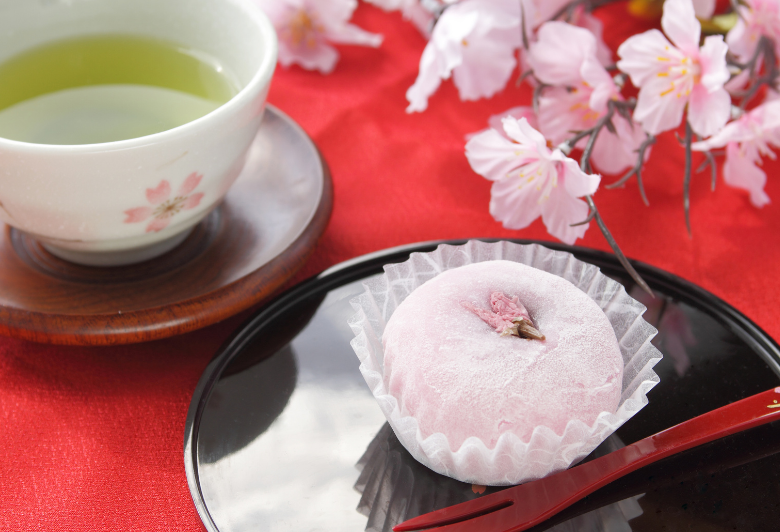
Read Also: WHAT IS MOCHI: A COMPLETE GUIDE TO MOCHI
Namagashi
If you have seen colorful works of art in the shape of leaves, flowers, and birds at a Japanese sweet shop and wondered what they were, you were most likely looking at Namagashi. Namagashi is a traditional Japanese confection with 30% or more moisture content. Each Namagashi is made by the hands of an experienced artisan with lots of care and attention to detail. Unique and poetic names are given to each Namagashi, such as Usagi (rabbit), Hotaru (fireflies), Uguisu (Warbler bird), etc. They might appear to be too beautiful to eat, but we recommend you try them out if you get a chance; they are made with natural ingredients, refined sweetness, and delicate flavors. They are too delicious to miss out on, especially paired with the bitter taste of Matcha tea.
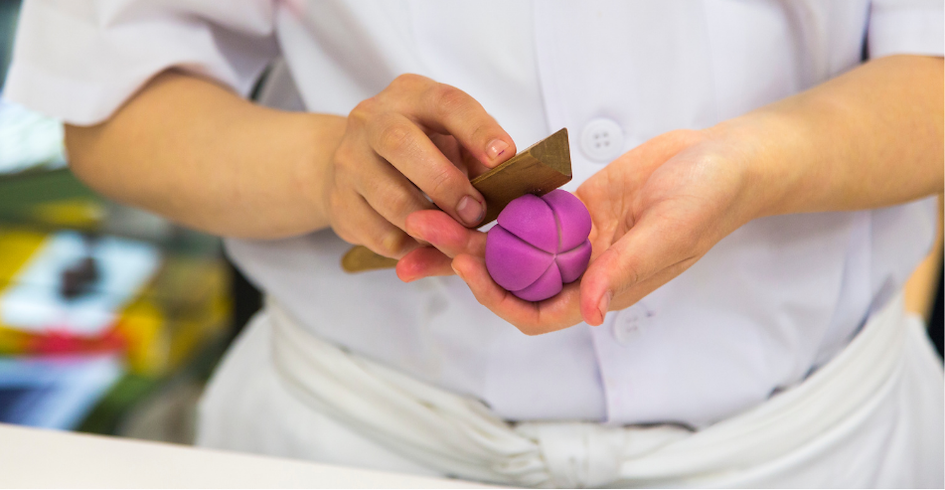 Konpeito
Konpeito
Compared to other Wagashi, Konpeito has a long shelf life and makes excellent overseas presents for your loved ones. They are small, colorful, sweet hard candies in beautiful storage containers such as elegant glass jars or intricately decorated boxes. Konpeito is round and small, with little bulges appearing like confetti stars. In Japan, Konpeito is a part of many festivals and celebrations such as weddings, childbirth, and Girl’s Day.
Since Konpeito has a long shelf life, about one year, you don't have to wait to try it out. There is a variety of Konpeitos you can order to try out without traveling to Japan.
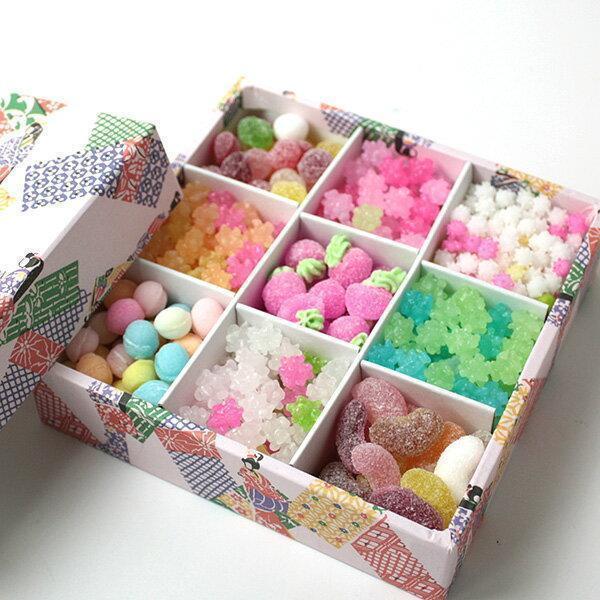 Monaka
Monaka
Monaka has a sweet bean paste filling sandwiched by two crispy light-as-air layers of wafers. It has been an essential part of Japanese traditions and has been mentioned in songs and poetry as early as the Muromachi period (1336 to 1573). Depending on the region, it can come in different shapes, such as Japanese maple leaf, chrysanthemum, cherry blossom, circle, ovals, rectangles, etc.
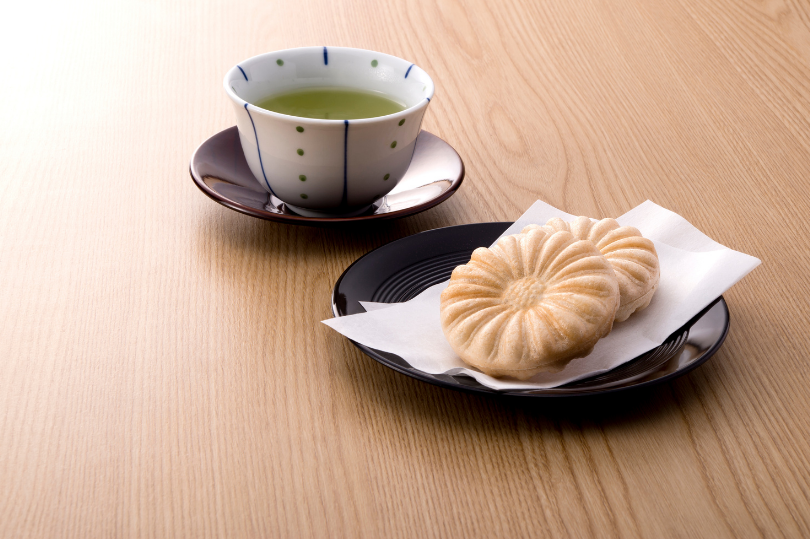 Yokan
Yokan
Visit any Japanese grandparent’s house, and you will be welcomed with elegantly cut Yokan slices and green tea. Yokan is solid blocks made with agar, water, sugar, and Japanese red bean paste. They can have other ingredients such as chestnuts, sesame, green tea powder, coffee, white bean paste, etc.
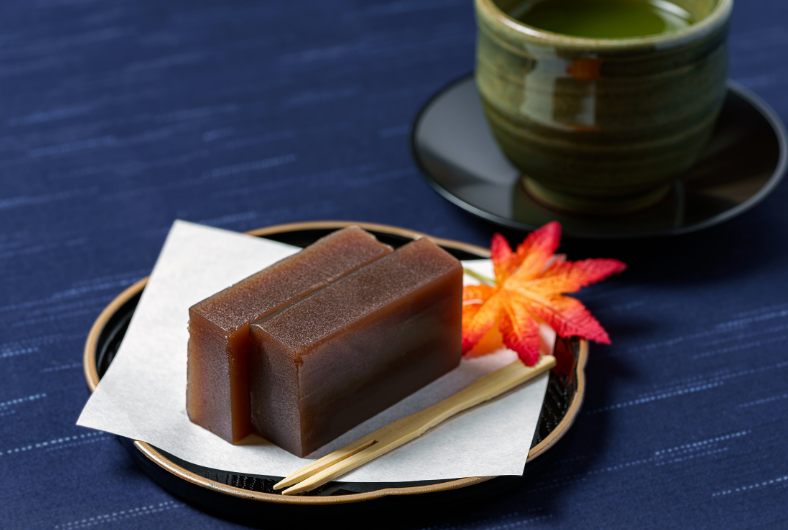 Yokan is another confection that has a long shelf life of one year. This makes Yokan one of the best confections to try without traveling to Japan. After opened the sugar may crystallize so make sure you store it properly, in a zip-lock bag or plastic wrap.
Yokan is another confection that has a long shelf life of one year. This makes Yokan one of the best confections to try without traveling to Japan. After opened the sugar may crystallize so make sure you store it properly, in a zip-lock bag or plastic wrap.
Dorayaki
Dorayaki means baked ‘Dora (gong-a musical instrument).’ The name comes from a legendary story that a Samurai forgot his ‘Dora at a farmer’s house and that the farmer used Dora to bake ‘dorayaki’ pancakes. Dorayaki is widely popular in Japan to all age groups and has also been featured in the popular media extensively, including the 70’s anime Doraemon – a cat robot from the future whose favorite food is Dorayaki.
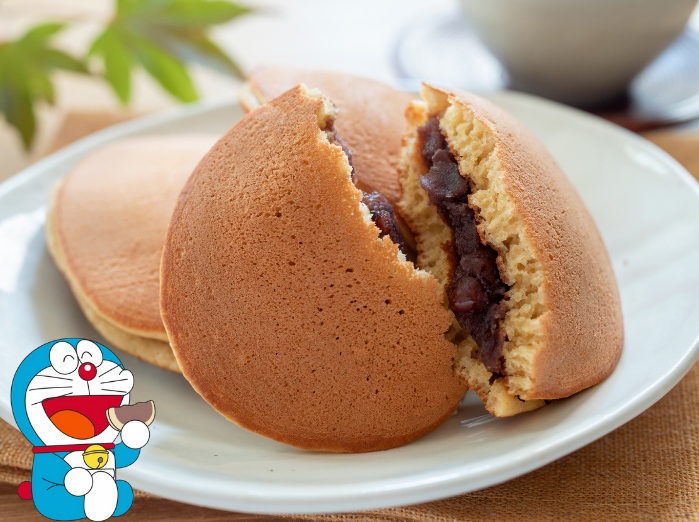 The easiest way to describe a Dorayaki would be as sweet Japanese red bean filling sandwiched between two fluffy and moist pancake-like patties. In Japan, there are artisan Dorayaki makers who dedicate their lives to perfecting the consistency and sweetness of the red bean paste and the art of making their Dorayaki pancake patties.
The easiest way to describe a Dorayaki would be as sweet Japanese red bean filling sandwiched between two fluffy and moist pancake-like patties. In Japan, there are artisan Dorayaki makers who dedicate their lives to perfecting the consistency and sweetness of the red bean paste and the art of making their Dorayaki pancake patties.
Dango
You are guaranteed to encounter some form of Dango at any festival in Japan. They are chewy, round balls skewered onto a stick and served with toppings and Japanese sauces. They are cute, easy to eat, and addictively delicious.
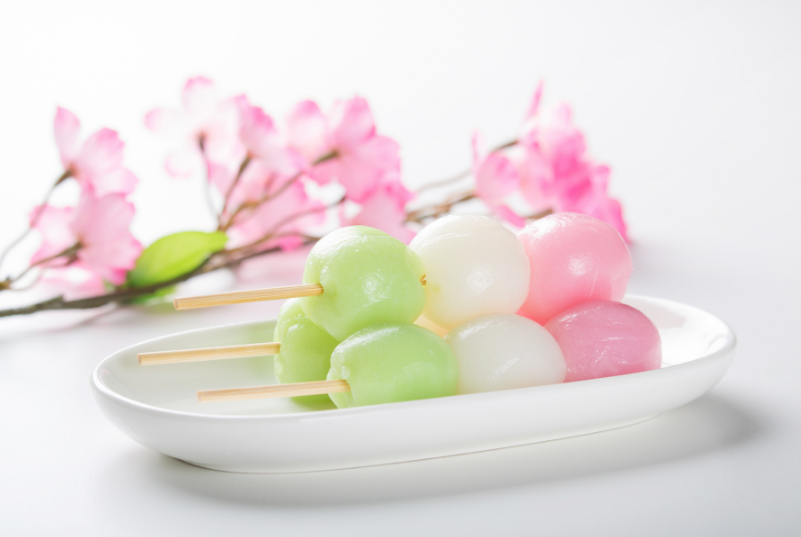 Manju
Manju
Manju comes in many different varieties, but most of them consist of a spherical shape with an outer layer made of flour, Japanese rice powder, buckwheat, and a filling made of Japanese red bean paste.
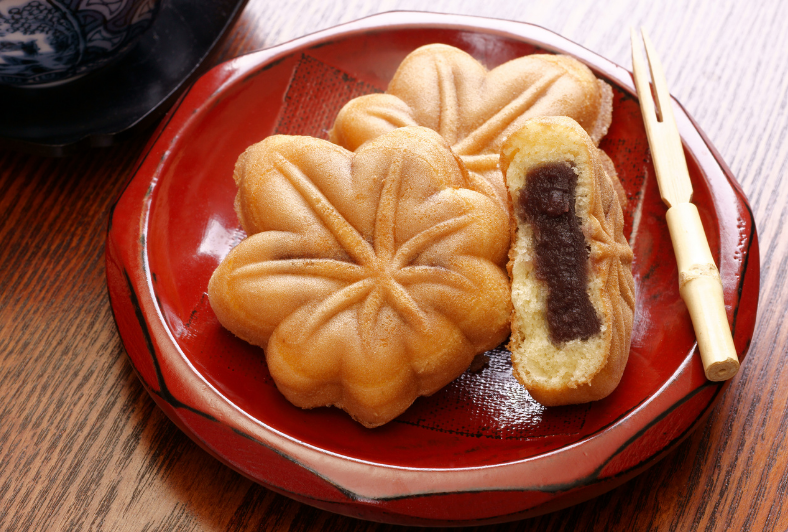 Anmitsu
Anmitsu
Anmitsu is a beautiful summer dessert bursting with colors as they are gorgeously decorated with colorful fresh fruits and agar jellies. Sweet, refreshing, and full of exciting textures, Anmitsu is the perfect Japanese traditional confection for a hot summer day.
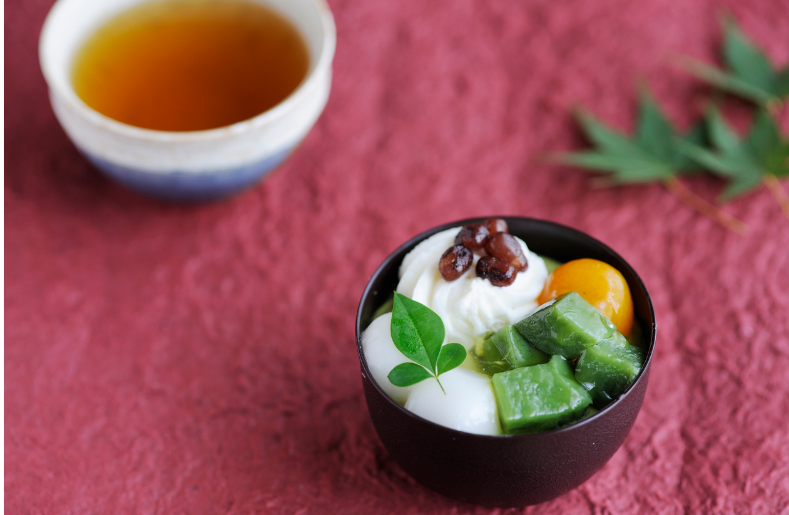
So there you go! Some of the best Japanese traditional confections that you must try to visit Japan. It will also be interesting to try each of them in different regions of Japan as there are so many regional varieties of these delicious treats. Also, do not forget to pack some of these gorgeous treats into your suitcase as Omiyage (gifts) for your friends and families back home!
Also Read: ARE JAPANESE RICE CRACKERS HEALTHY